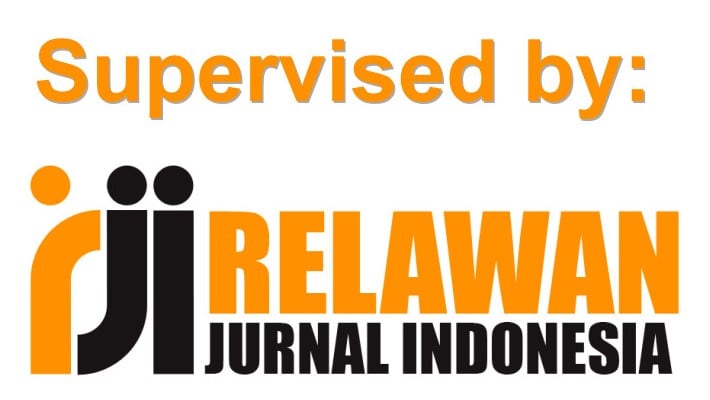Perbandingan Hasil Belajar Matematika dengan Structured Dyadic Method dan Brain Gym Method
(1) Bimbingan Belajar Professor Bob
(2) Program Studi Pendidikan Matematika, FMIPA, Universitas Indraprasta PGRI Jakarta.
(*) Corresponding Author
Abstract
Full Text:
PDFReferences
Diknas. (2003). Undang-Undang Nomor 20 Tahun 2003 tentang Sistem Pendidikan Nasional dan Penjelasannya. Yogyakarta: Media Wacana.
------ (2005). Pedoman Umum Ejaan Bahasa Indonesia yang Disempurnakan. Jakarta: Balai Pustaka.
------ (2008). Kamus Besar Bahasa Indonesia Pusat Bahasa Edisi Keempat. Jakarta: Gramedia Pustaka Utama.
Hakim, A. R. (2014). Pengaruh Model Pembelajaran Generatif terhadap Kemampuan Pemecahan Masalah Matematika. Jurnal Formatif, 4(3): 196-207.
Marliani, N., & Hakim A .R. (2015). Pengaruh Metode Belajar dan Kecemasan Diri terhadap Hasil Belajar Matematika Peserta Didik. JKPM (Jurnal Kajian Pendidikan Matematika), 1(1): 135-150.
Masykur Ag. M., & Fathani A. H. (2007). Mathematical Intelligence: Cara Cerdas Melatih Otak dan Menanggulangi Kesulitan Belajar. Yogyakarta: Ar Ruzz Media.
Olivia, F. (2012). Klinik Belajar Otak Kanan. Jakarta: Elex Media Komputindo.
Purwandari, H. (2014). Pemberian Brain Gym terhadap Hasil Belajar Matematika Siswa Kelas III di SDN Balongrejo. (online). Vol. 3(2). http://jurnal.stikesstrada .ac.id/ index .php/strada/article/view/56/65 (diunduh Kamis, 01 Oktober 2015 pukul 23.04 WIB).
Rahmawati, F. (2009). Pengaruh Penerapan Structured Dyadic Method terhadap Hasil Belajar Matematika Siswa Kelas VIII Semester Ganjil SMP Negeri 7 Bandar Lampung. (online). (Vol. 1). http://www.stkippgribl.ac.id/ FAJAR/creamburn /html/contact.html (diunduh Kamis, 01 Oktober 2015 pukul 22.54 WIB).
Slavin, R. E. (2008). Cooperative Learning. Bandung: Nusa Media.
Suhendri, H., & Mardalena T. (2013). Pengaruh Metode Pembelajaran Problem Solving terhadap Hasil Belajar Matematika Ditinjau dari Kemandirian Belajar. Jurnal Formatif, 3(2): 105-114.
Suyatna. (2009). Menjelajah Pembelajaran Inovatif. Jakarta: Masmedia Buana Pustaka.
DOI: http://dx.doi.org/10.30998/jkpm.v2i2.2491
Article Metrics
Metrics powered by PLOS ALM
Refbacks
- There are currently no refbacks.
Copyright (c) 2017 Bayu Chendi Saputra, Arif Rahman Hakim

This work is licensed under a Creative Commons Attribution-ShareAlike 4.0 International License.
Alamat: Jln. Nangka No. 58C (TB. Simatupang), Kel. Tanjung Barat, Kec. Jagakarsa, Jakarta Selatan 12530

3.png)





